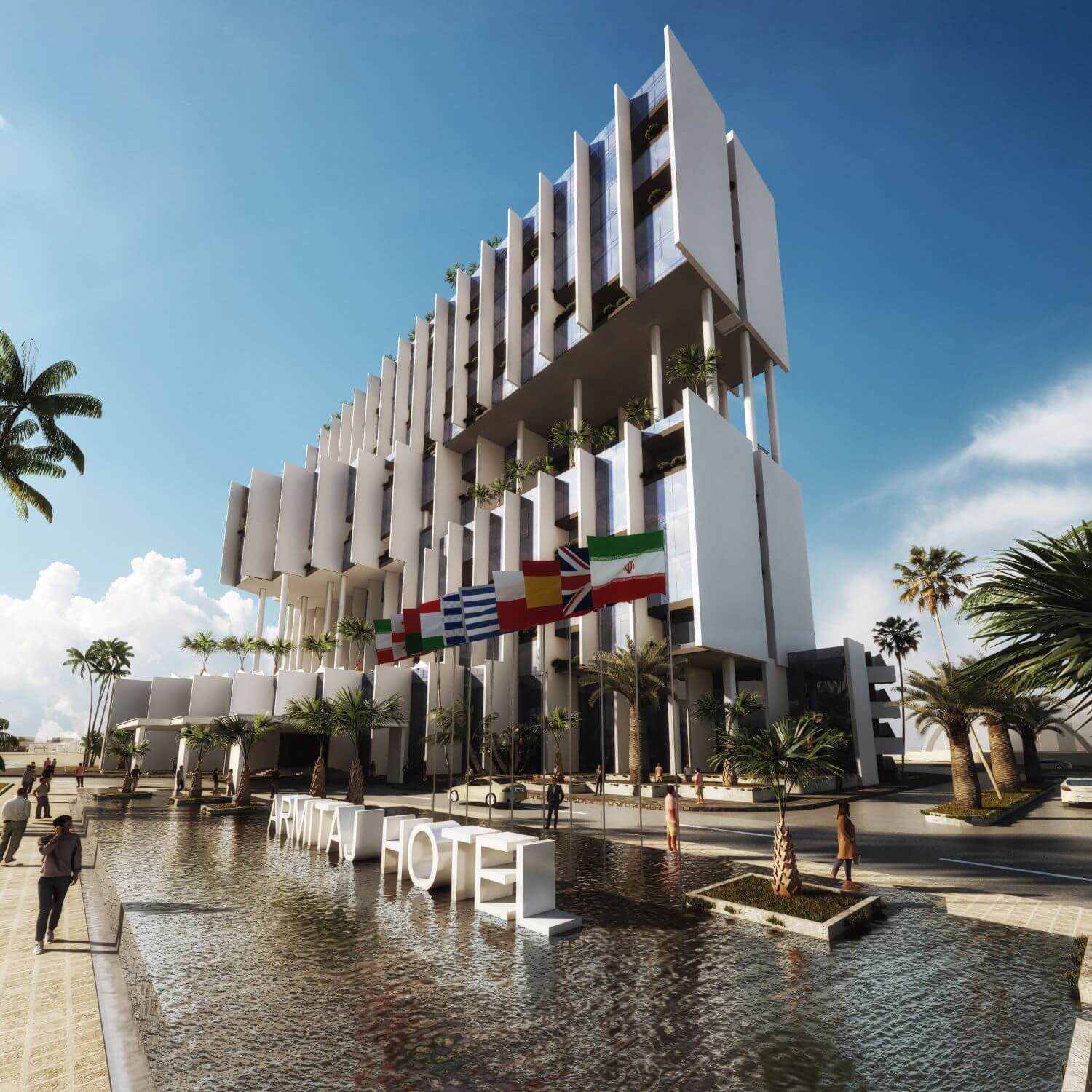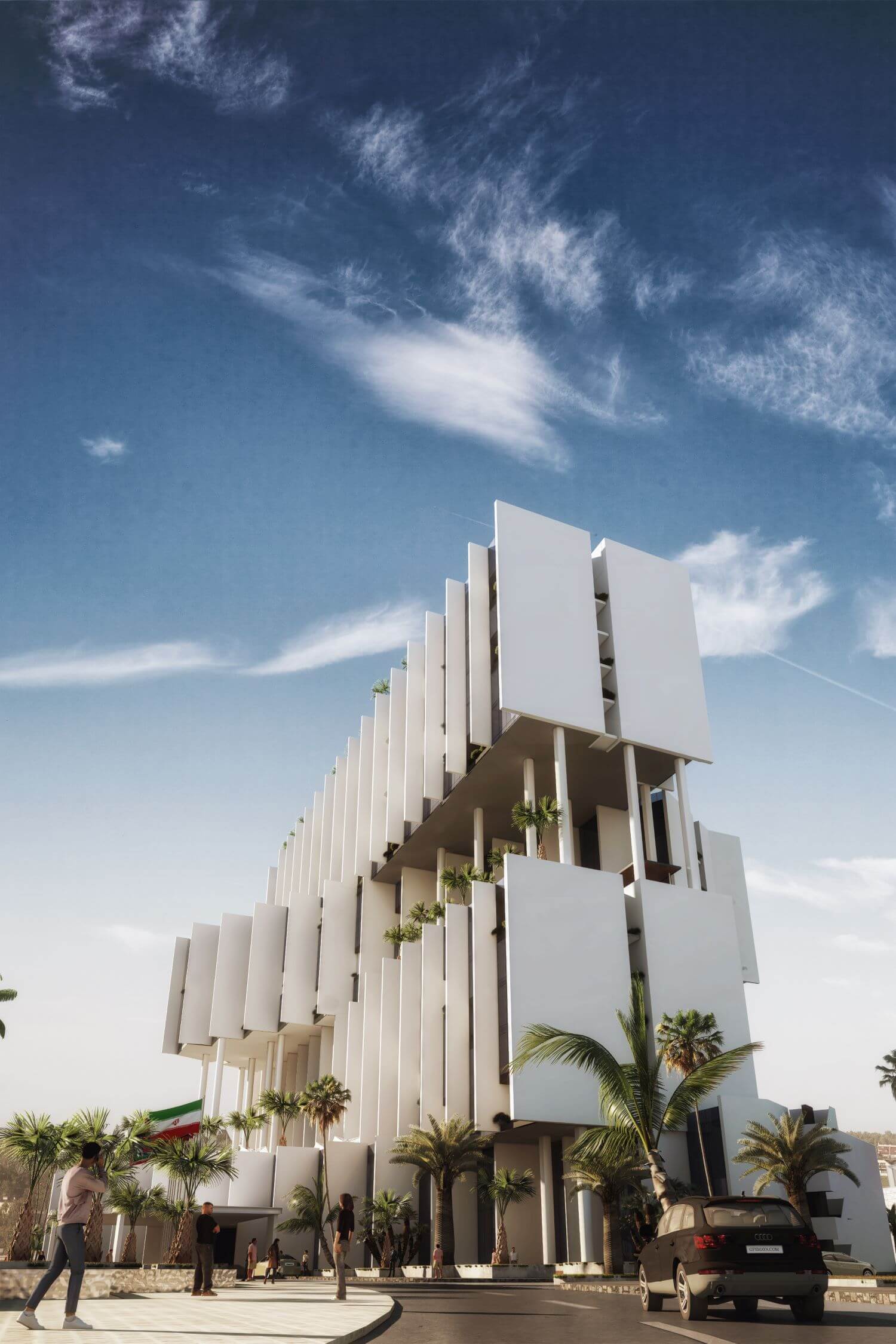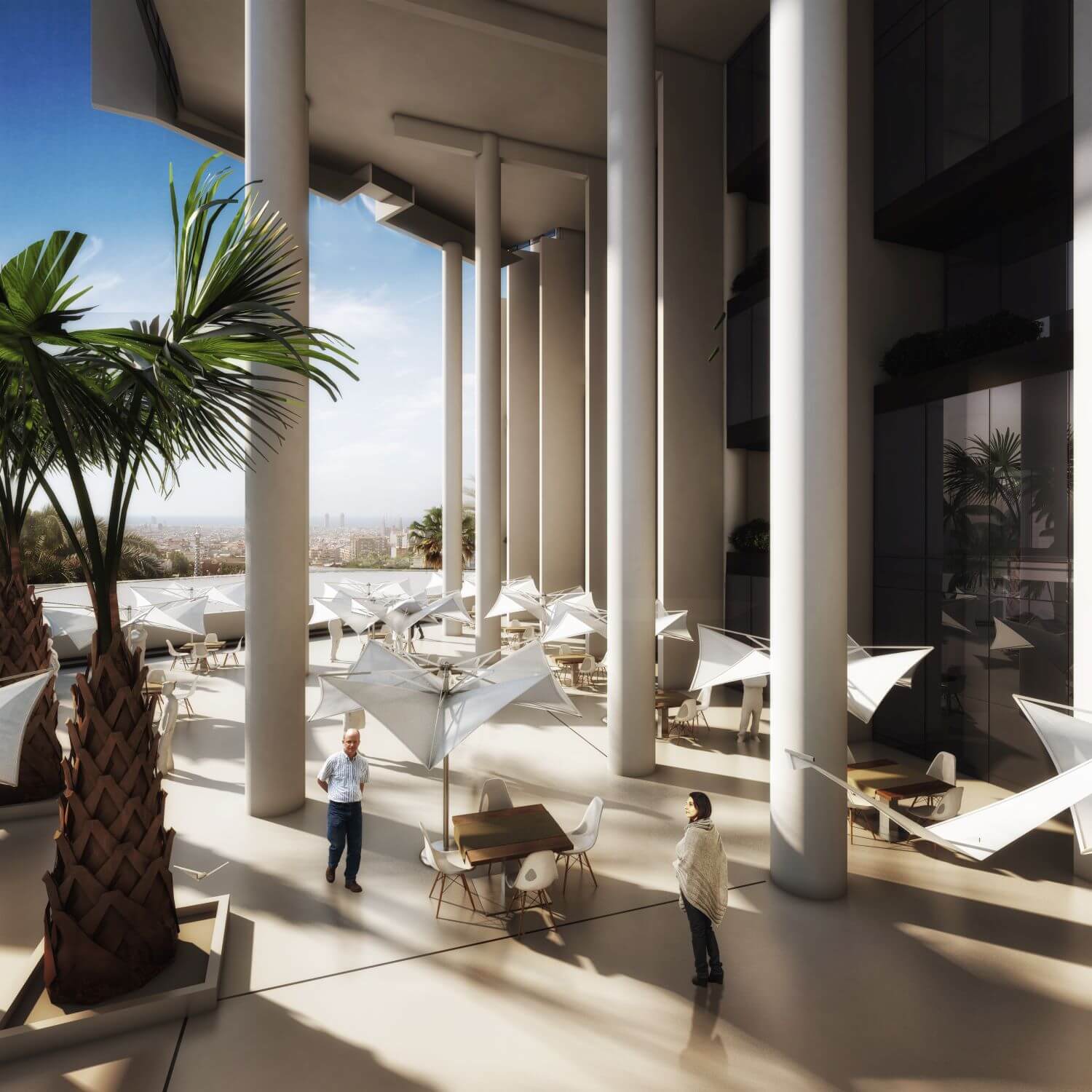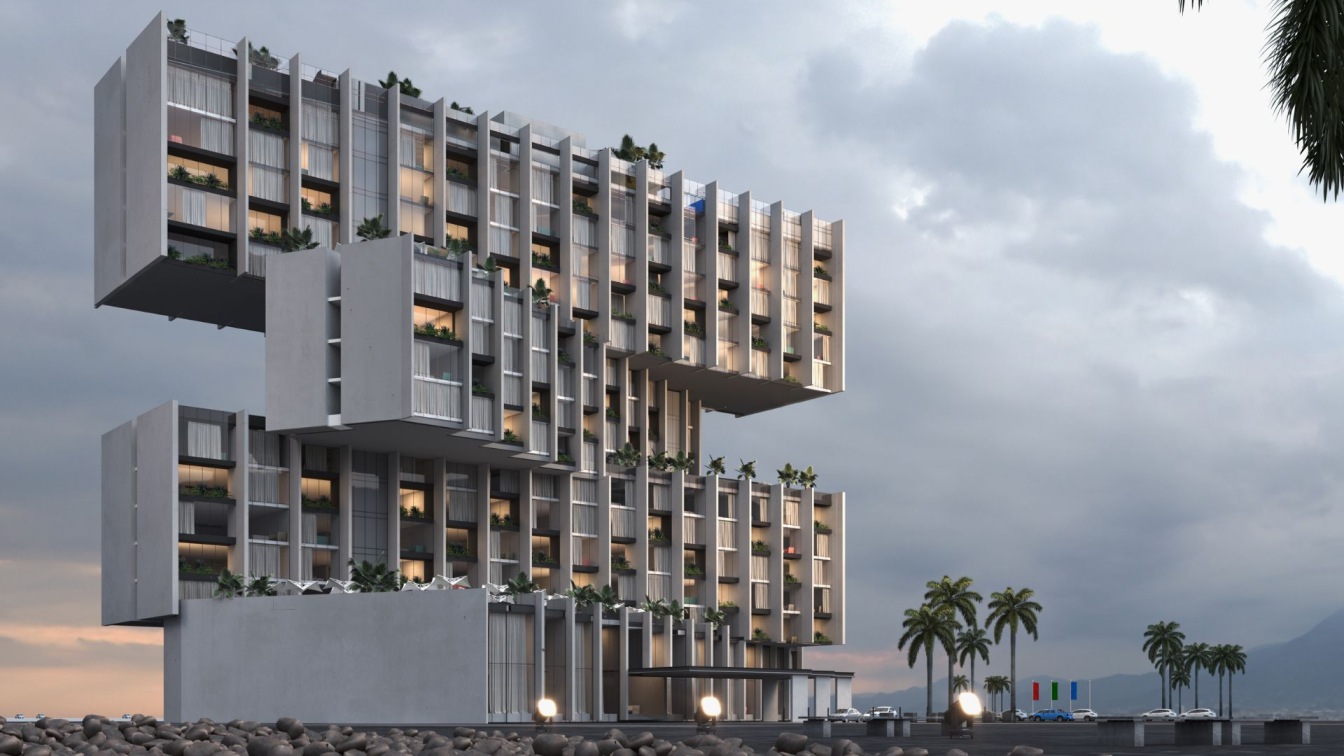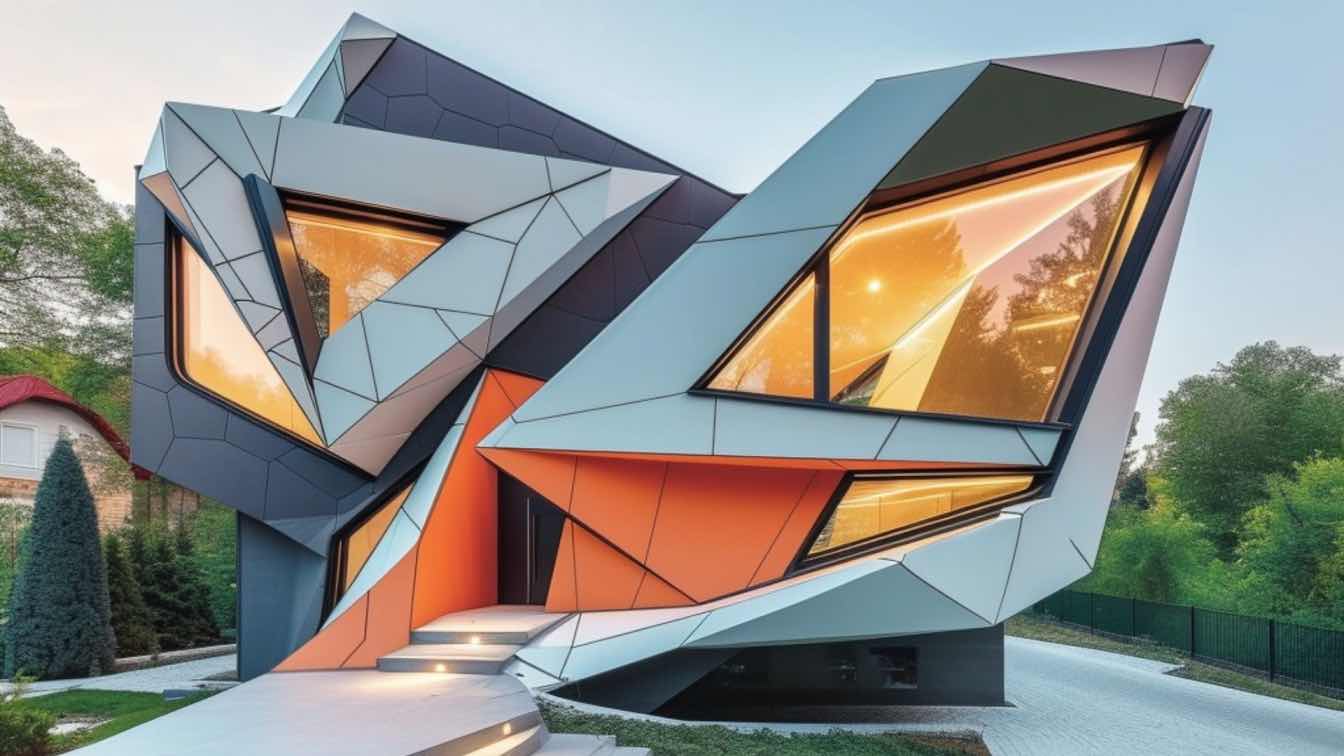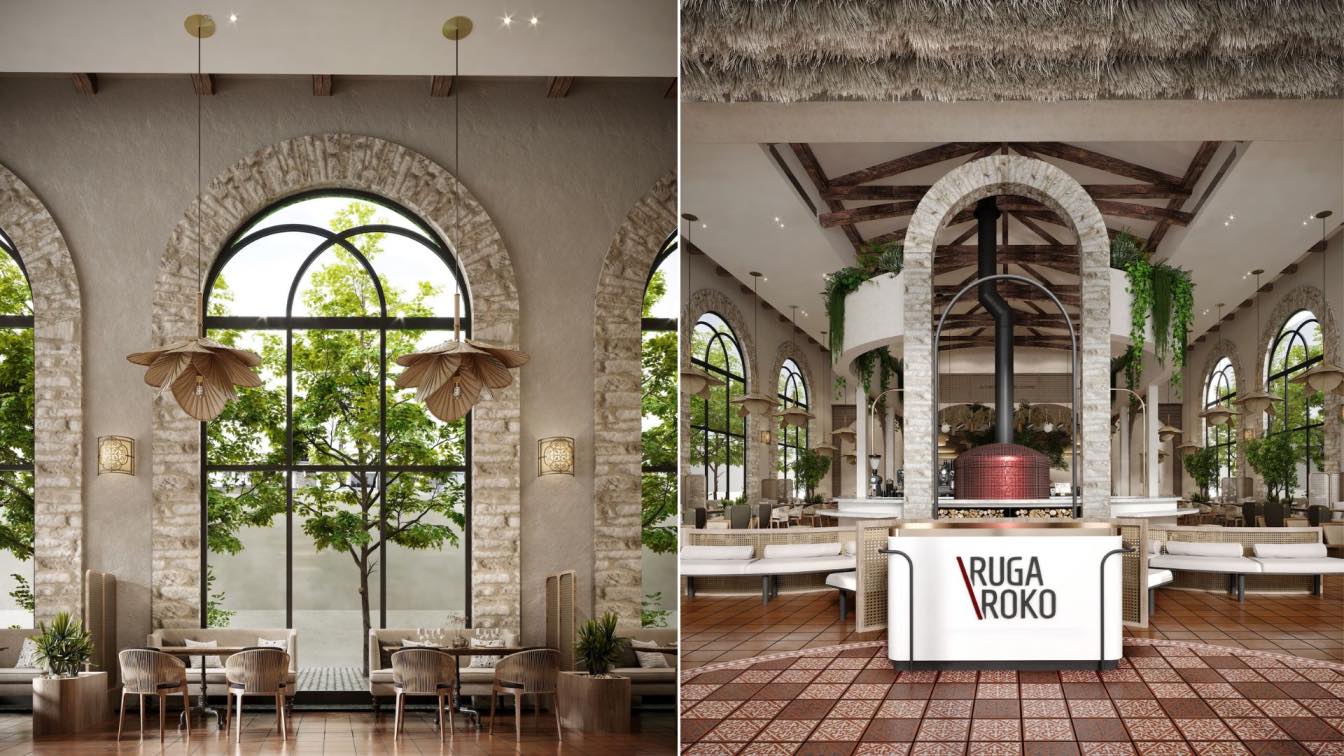AshariArchitects: The development of Kish in terms of tourism has led to the construction of new urban texture and buildings in the city to attract tourists and it can be noted that hotels are a potential platform that attracts tourists in the city texture according to their architectural-environmental factors.
Hotels were usually used as a temporary place for passengers' accommodation where provided services and products just for their guests. But nowadays this system is changed and we have faced the question in this plan and it leads us to this question that:
Is it possible to create various uses and functions in the hotel, including lively activities and social interactions that affect both the form and the structure, and how can these be considered in the project? These various functions can attract apart from the hotel guests, attracts also other tourists and even citizens to the complex to use hotel services and facilities.
To achieve this objective and respond to these questions we first tried to create dynamism and fluidity in the form, and make ample public terraces and multiple functions by horizontal cuts on the building mass and its rotation where the cuts overlap. In consequence, we created interaction and visibility to lower levels at the same time.
Open and semi-open terraces that are parts of the adjoining space of rooms, restaurants, and cinemas that serve as hangouts and social spaces can provide a sense of place by creating individual and collective memories and social interactions.
We also defined a transverse gap on the first level with the inspiration of the long narrow alleys of hot and humid areas to create a semi-open and public space as a connection element and airflow path. This rotation is repeated on a smaller scale in the other modules. Lastly, we could provide a complete visual communication with the sea and natural light for rooms.
